In today’s world, where sustainability and efficiency are paramount, the cardboard baler has emerged as a crucial tool for businesses across various industries. Whether you are managing a warehouse, running a retail store, or operating a recycling facility, understanding the power of a cardboard baler can significantly enhance your operations. This comprehensive guide will walk you through everything you need to know about cardboard balers, from their benefits and types to their operation and maintenance.
Introduction to Cardboard Balers
What is a Cardboard Baler?
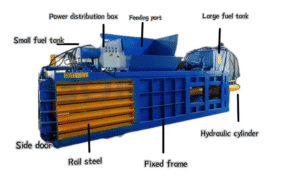
A cardboard baler is a machine designed to compress large amounts of cardboard waste into compact, manageable bales. These bales can then be easily transported and recycled, reducing the overall waste volume and promoting sustainable practices. Cardboard balers come in various sizes and capacities, making them suitable for businesses of all scales, from small retail stores to large manufacturing facilities.
The Importance of Cardboard Balers
Cardboard is one of the most commonly used materials in packaging and shipping. While it is recyclable, improper disposal can lead to significant environmental issues. Cardboard balers play a vital role in waste management by reducing the volume of cardboard waste, making it easier to recycle and minimizing the carbon footprint. Additionally, they help businesses save on waste disposal costs and improve overall operational efficiency.
Benefits of Using a Cardboard Baler
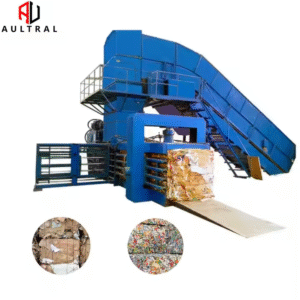
Cost Savings
One of the most compelling reasons to invest in a cardboard baler is the potential for significant cost savings. By compacting cardboard waste into dense bales, businesses can reduce the frequency of waste collection services, leading to lower disposal fees. Moreover, recycling cardboard can generate additional revenue through the sale of baled cardboard to recycling facilities.
Space Efficiency
Cardboard balers help optimize warehouse and storage space. Uncompacted cardboard waste can take up a considerable amount of room, leading to inefficient use of valuable space. By compressing cardboard into compact bales, businesses can free up more space for inventory storage and other operations.
Environmental Impact
In an era where sustainability is a top priority, cardboard balers contribute to a greener planet. Recycling cardboard reduces the need for new raw materials, conserves natural resources, and lowers greenhouse gas emissions. By using a cardboard baler, businesses can take a significant step towards reducing their environmental impact and promoting a circular economy.
Improved Safety and Hygiene
Loose cardboard waste can pose safety hazards, such as tripping and falling, and can also attract pests and create unsanitary conditions. A cardboard baler helps maintain a clean and organized workspace, reducing the risk of accidents and improving overall hygiene.
Types of Cardboard Balers
Manual Cardboard Balers
Manual cardboard balers are the simplest and most affordable option. They rely on human effort to compress cardboard into bales. These machines are ideal for small – scale operations with limited cardboard waste. While they require more labor, they are cost – effective and easy to use.
Semi – Automatic Cardboard Balers
Semi – automatic balers combine manual and automatic features. They typically require some human intervention, such as loading the cardboard, but use hydraulic systems to compress the material. These balers are suitable for medium – sized businesses that need a balance between cost and efficiency.
Fully Automatic Cardboard Balers
Fully automatic cardboard balers are the most advanced and efficient option. They operate with minimal human intervention, using sensors and automated systems to load, compress, and tie the cardboard into bales. These machines are ideal for large – scale operations with high – volume cardboard waste. While they come with a higher price tag, they offer significant time and labor savings.
Key Features to Look for in a Cardboard Baler
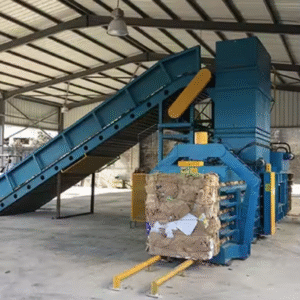
Capacity
The capacity of a cardboard baler is a crucial factor to consider. It determines how much cardboard the machine can handle at one time. Businesses should choose a baler with a capacity that matches their waste generation rate. For example, a small retail store may only need a low – capacity baler, while a large manufacturing facility may require a high – capacity model.
Compression Force
The compression force of a cardboard baler affects the density of the bales produced. Higher compression force results in denser bales, which are easier to transport and recycle. When selecting a baler, consider the compression force required to meet your specific needs.
Ease of Use
A user – friendly interface and simple operation are essential for efficient use. Look for a baler with intuitive controls, clear instructions, and easy – to – follow maintenance procedures. This will ensure that your employees can operate the machine with minimal training.
Safety Features
Safety should always be a top priority. Modern cardboard balers come with various safety features, such as emergency stop buttons, safety guards, and automatic shut – off mechanisms. These features help protect operators from accidents and ensure a safe working environment.
Maintenance Requirements
Regular maintenance is crucial for the longevity and performance of a cardboard baler. Choose a machine with easy – to – access components and clear maintenance guidelines. Some balers also offer remote monitoring and diagnostic features, which can help identify potential issues before they become major problems.
How to Choose the Right Cardboard Baler for Your Business
Assess Your Needs
Before purchasing a cardboard baler, it is essential to assess your specific needs. Consider factors such as the volume of cardboard waste generated, available space, budget, and operational requirements. This will help you determine the type and capacity of baler that best suits your business.
Research and Compare
Research different brands and models of cardboard balers to understand their features, benefits, and limitations. Compare prices, customer reviews, and warranties to make an informed decision. Don’t hesitate to reach out to manufacturers or suppliers for more information and personalized recommendations.
Consider Future Growth
Think about your business’s future growth and expansion plans. Investing in a cardboard baler that can accommodate increased waste volumes or additional features may save you from having to upgrade in the near future.
Consult with Experts
If you are unsure about which cardboard baler to choose, consult with industry experts or waste management professionals. They can provide valuable insights and help you select the best option for your specific situation.
Operating a Cardboard Baler
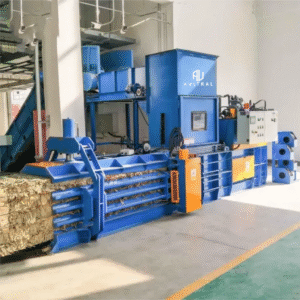
Preparation
Before operating a cardboard baler, ensure that all safety precautions are in place. Train your employees on the proper use of the machine and provide them with necessary safety equipment, such as gloves and safety glasses. Remove any non – cardboard materials from the waste to prevent contamination and damage to the machine.
Loading the Baler
Load the cardboard into the baler according to the manufacturer’s instructions. Avoid overloading the machine, as this can lead to inefficient baling and potential damage. Ensure that the cardboard is evenly distributed to achieve optimal compression.
Baling Process
Once the cardboard is loaded, initiate the baling process. The baler will compress the cardboard into a dense bale. Some balers may require manual tying of the bale, while others have an automatic tying system. Follow the machine’s instructions to complete the baling process.
Unloading and Storage
After the bale is complete, carefully unload it from the baler. Store the bales in a designated area, ensuring they are properly secured and protected from the elements. Regularly transport the bales to a recycling facility to maintain efficient waste management practices.
Regular Maintenance
To keep your cardboard baler in optimal condition, perform regular maintenance tasks. These may include cleaning the machine, lubricating moving parts, checking for wear and tear, and replacing any damaged components. Follow the manufacturer’s maintenance schedule and guidelines to ensure the longevity of your baler.
Troubleshooting Common Issues
Despite regular maintenance, issues may still arise. Common problems with cardboard balers include hydraulic system failures, electrical malfunctions, and blockages. Familiarize yourself with the troubleshooting guide provided by the manufacturer to quickly identify and resolve these issues. If a problem persists, contact a professional technician for assistance.
Safety First
Always prioritize safety when operating and maintaining a cardboard baler. Ensure that the machine is turned off and disconnected from power sources before performing any maintenance tasks. Never attempt to repair or adjust the machine while it is in operation.
Case Studies: Real – World Applications of Cardboard Balers
Retail Store Success
A small retail store was struggling with the accumulation of cardboard boxes from daily deliveries. The store owner decided to invest in a manual cardboard baler to manage the waste more efficiently. By compacting the cardboard into bales, the store was able to reduce the frequency of waste collection services, saving on disposal costs. Additionally, the organized storage of bales freed up valuable space in the warehouse, allowing for more efficient inventory management.
Manufacturing Facility Efficiency
A large manufacturing facility was facing challenges with the disposal of vast amounts of cardboard waste generated during production. The company installed a fully automatic cardboard baler to streamline their waste management process. The baler’s high – capacity and efficient operation allowed the facility to compress large volumes of cardboard into dense bales quickly. The company not only reduced waste disposal costs but also generated additional revenue by selling the baled cardboard to recycling facilities. The improved space utilization in the warehouse also enhanced overall operational efficiency.
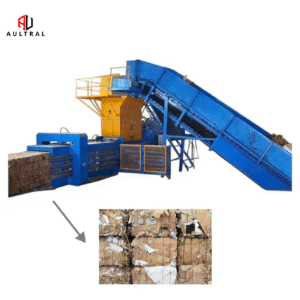
Conclusion
A cardboard baler is a powerful tool that can significantly improve waste management practices, reduce costs, and promote sustainability. By understanding the benefits, types, and key features of cardboard balers, businesses can make informed decisions to choose the right machine for their needs. Proper operation and maintenance are essential to maximize the efficiency and longevity of the baler. Real – world case studies demonstrate the positive impact that cardboard balers can have on businesses of all sizes. Investing in a cardboard bal
